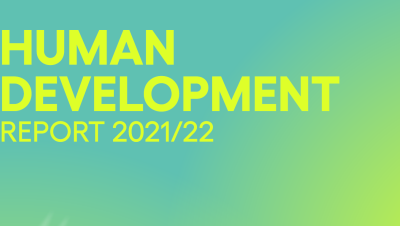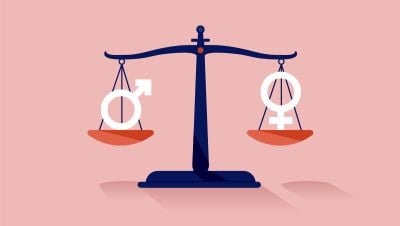The 2015 Human Development Report (HDR) considers major changes in the world of work, affecting when, how, and where people work. Technological progress, deepening globalization, aging societies and environmental challenges are transforming work, posing challenges to all societies and with deep implications for human development. The report urges societies to act now to prevent widening inequalities, emanating from these challenges.
For Asia and the Pacific, a region that is home to two-thirds of the world’s working-age population, the availability and quality of work becomes central to ensuring the human development progress. In fact, as the report highlights, the region may have been experiencing fast growth and rapid human development, but not necessarily fast job creation. Unless action is taken, many people, particularly those already marginalized, might be left behind.
A closer look at the region’s human development and work-related indicators reveals significant diversities from country to country. For instance, the 2015 Report shows that at the global level East Asia and the Pacific has the third highest Human Development Index (HDI) , while South Asia is second from bottom. And youth unemployment ranges between 0.5 percent in Cambodia to 54 percent in Kiribati, with Indonesia being at 31.3 percent. These divergent trends illustrate the importance of policy prioritization that fits different country contexts, albeit there are common challenges that need to be addressed to make work a catalyst for inclusive growth in the region.
First, globalisation and technological change may pose different scenarios for the region in the coming years in previous decades. Both trends have benefited many countries in Asia and the Pacific with global value chains, outsourcing and offshoring of service jobs supporting swift economic progress. However, as highlighted in the 2015 Report, projected job growth is smaller, and primarily expected in the service sectors, with higher skill requirements due to digital automation. Moreover, much of Asia Pacific’s working poor population do not participate in these sectors nor do they yet possess the requisite skills. Therefore, countries in Asia and the Pacific face a complex challenge of equipping the work force for emerging areas of work with the requisite skills, and successfully combining appropriate technologies in doing so.
Second, the region also needs to address major challenges that threaten to weaken or break the positive link between work and human development. According to the 2015 report, Asia and the Pacific as a whole has the largest numbers of people trapped in dangerous and demeaning work including forced labour, trafficking and child labour (with the largest absolute number of child workers– 78 million (5-17 years), with over half in hazardous work. The region also accounts for the largest number of forced labourers in the world – 11.7 million of the global total (56 percent).
Third, countries in the region need to create enabling conditions for gender equality, including in areas of work. Informal and vulnerable work disproportionately affects women. In South Asia, 83 percent of employed women are in vulnerable jobs while women on average earn nearly 31 percent less than men, according to estimates by the International Labour Organization. In East Asia and the Pacific, 52 percent of the employed women are in vulnerable jobs and women on average earn nearly 19 percent less than men. Some of these wage discrepancies result from differences in education, skill levels and years of experience, but in most cases the gap is ‘unexplained’- possibly driven by discrimination, the report notes. The report also spotlights a growing care bounder that is disproportionately affecting women. This imbalance is most evident in the time that women spend in unpaid work within homes compared to men.
In a special contribution to 2015 HDR, H.E. Benigno S. Aquino III, President of The Philippines, highlights a key principle to tackle all these challenges: inclusiveness. It provides examples of how it has guided policymaking in areas such as youth unemployment, vulnerable and informal work for women and universal access to education and health. President Aquino writes: “We are centered on our people: They are the end-all and be-all of everything we do. Thus we will exert every effort to empower them, give them the same rights and protections and maximize their opportunities – regardless of social status, welfare and yes even the nature of work.” This contribution touches on a key principle of human development - that people are the real wealth of nations.
The 2015 report urges countries and societies in Asia and the Pacific to promote decent work opportunities and making work sustainable. From the point of sustainable work, in a special contribution to the 2015 HDR, H.E. Maithripala Sirisena, President of Sri Lanka highlights the importance o community participation in improving rural livelihoods. President Sirisena writes: “The issues of maintaining rural agricultural ecosystems for sustainable agriculture have been a challenge for centuries. But collective action by farmer societies has ensured not only the protection of agricultural ecosystems, but also the collection and storage of periodic rainwater for use throughout the year.” This shows hoe societies through collective action can make agriculture sustainable.
The East Asian regional launch of the Human Development Report 2015 in Manila and its South Asian regional launch in Colombo are important opportunities to engage in dialogue on advancing the agenda of enhancing human development through work.


